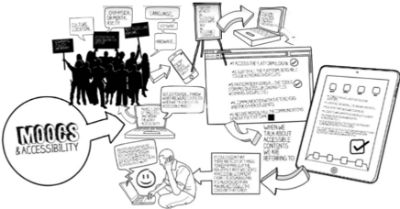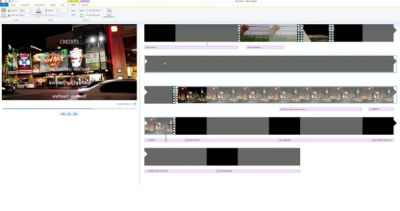
“sMOOC Step by Step” is a free Massive Open Online Course – MOOC is being made available by ECO, which is a European project based on Open Educational Resources (OER), that gives free access to a list of MOOCs in 6 languages, in most languages via Closed Captions (via YouTube subtitles).
This arti cle forms integral part of that course. Our fourth edition has been already launched so you enrol!
cle forms integral part of that course. Our fourth edition has been already launched so you enrol!
In this course you will have the opportunity to learn more about how to design your communication plan for your own MOOC. A communication plan is a written document that serves as a guide to the communication and sponsorship efforts throughout the duration of the project.
It is a living and working document and is updated periodically as audience needs change. It explains how to convey the right message, from the right communicator, to the right audience, through the right channel, at the right time.
It addresses the six basic elements of communications: communicator, message, communication channel, feedback mechanism, receiver/audience, and time frame.
A communication plan includes:
- “Who” – the target audiences
- “What” – the key messages that are trying to be articulated
- “When” – timing, it will specify the appropriate time of delivery for each message
- “Why” – the desired outcomes
- “How” – the communication vehicle (how the message will be delivered)
- “By whom” – the sender (determining who will deliver the information and how he or she is chosen)Many agencies, PR, advertising and media alike, claim to have this capability describes.
The best time to develop your plan is in conjunction with your annual budgeting or organizational planning process.
Here you have some tips about how to develop your plan:
- Define objectives and goals.
- Conduct a research-communication audit.
- Identify the purpose of your communication.
- Identify your audience.
- Plan and design your message.
- Consider your resources. Identify tools.
- Plan for obstacles and emergencies.
- Establish a timetable.
- Strategic how you’ll connect with the media and others who can help you spread your message
- Create an action plan
- Decide how you’ll evaluate your plan and adjust it, based on the results of carrying it out
- Evaluate the result.
What does your intended audience read, listen to, watch, engage in? You have to reach them by placing your message where they’ll see it.
In order to communicate effectively, you need to be able to truly understand your workplace context, choose appropriate methods of communication to suit your audience, plan and undertake detailed communication plans, and follow up on the success of your communication and messaging. The importance of accessibility is an essential communication tool to provide equal, barrier-free access to information for educational institutions.
We know that promotion and marketing are necessary to attract students to a MOOC. This will likely utilize social media and professional networks to advertise the course and gain attention.
ECO content can be visualized on computers, tablets and/or Smart phones.
You can check our social media sites where we promote our MOOCS:
If you would like to become the instructor of your own MOOC, after completed “sMOOC Step by Step” please apply to “Become an e-teacher”. We can’t wait to see what you create. – Team UoMan.
Note: Article idea and some texts are taken from:
https://flo.flinders.edu.au/mod/book/view.php?id=672344&chapterid=56344
https://en.wikipedia.org/wiki/Communication_planning
http://ctb.ku.edu/en/table-of-contents/sustain/social-marketing/awareness-through-communication/main


